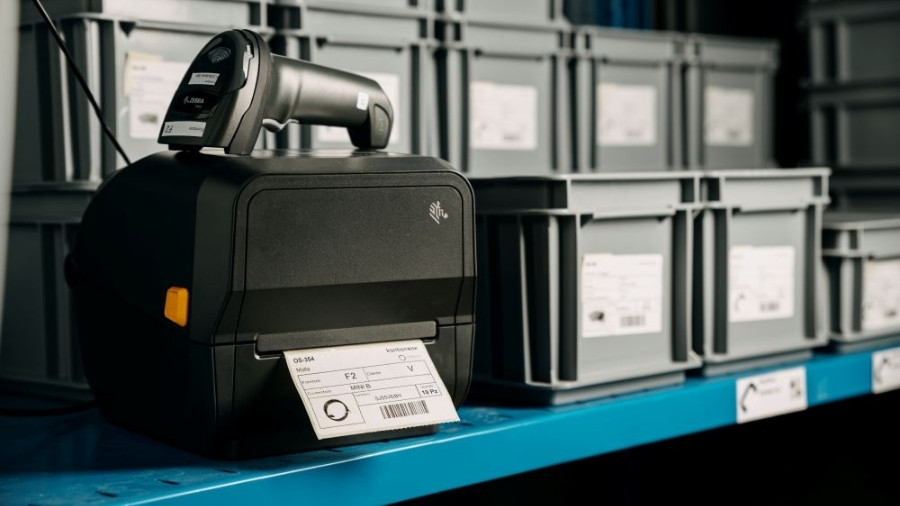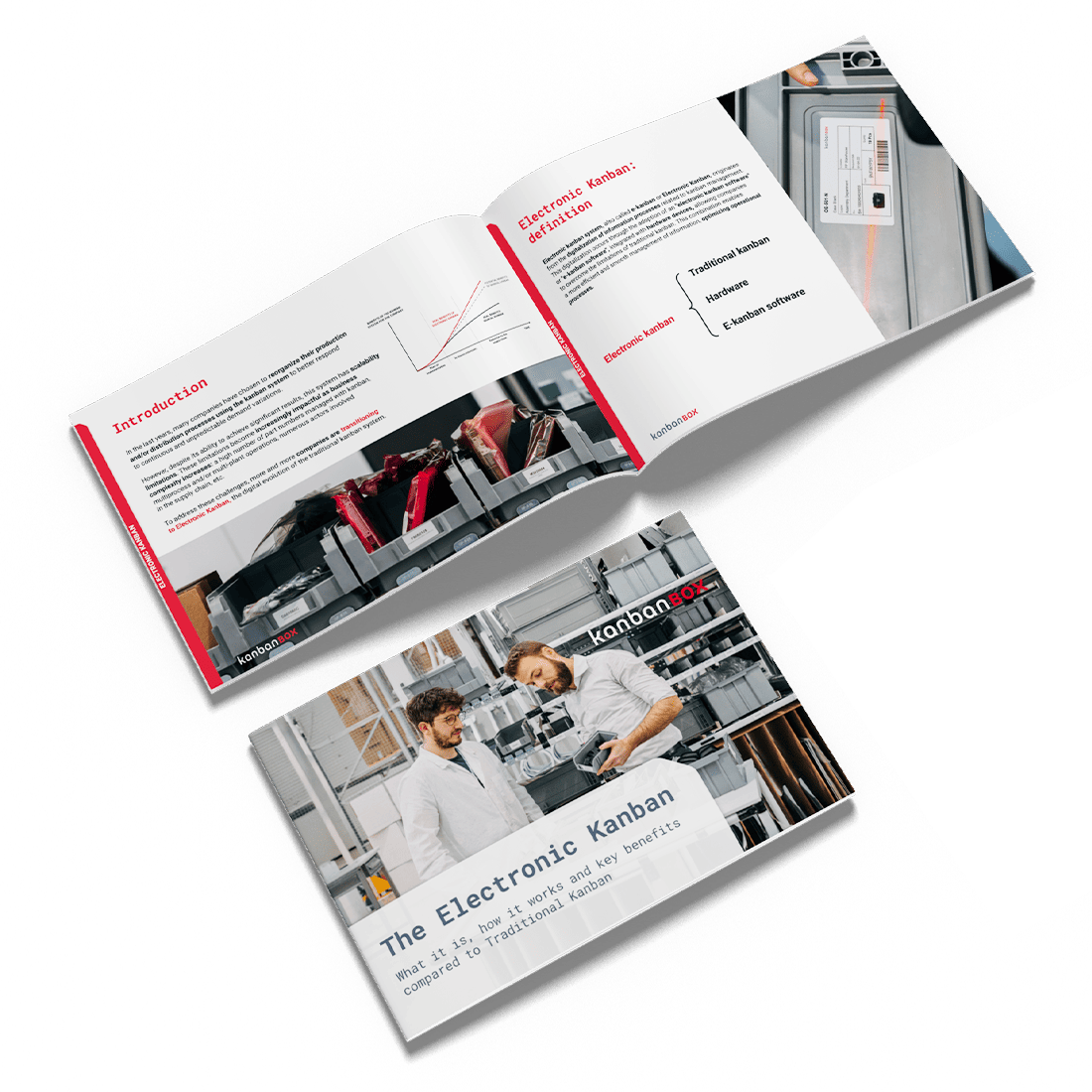Questions and answers about electronic kanban (part 1)
Electronic kanban is one of the most effective solutions for improving material management according to Lean principles. But there’s a lot of confusion around the topic.
In this article, the first of a series, we answer the most frequently asked questions about electronic kanban, collected from companies, operators, and production/logistics managers. The content is designed to clarify key concepts, resolve doubts, and help you understand what an electronic kanban system really is.
In this first part, we’ll clarify the basic concepts and definitions.
What is electronic kanban?
It’s the digitized evolution of the kanban system. Synonymous with e-kanban, electronic kanban is a kanban system for managing production and/or materials, enriched by integration with dedicated software and digital devices. With electronic kanban, you gain full control over the status of your kanban system and cards (available, to replenish, in process…), digitize replenishment signals, automate tasks, and access performance data that improve system management.
To learn more, read this article: What is electronic kanban or download our free Electronic Kanban Guide.
What are the benefits of electronic kanban?
Control, efficiency, automation. Electronic kanban (e-kanban) allows you to digitize and track all the information related to kanban cards, letting you monitor their status in real time (available, in process, to replenish…) and access processes metrics. It also helps automate and digitize tasks such as the transmission of the replenishment signal, increasing operational efficiency, reducing errors and downtime, and enabling direct collaboration with suppliers and departments.
To discover more about these and other advantages, download our free Electronic Kanban Guide.
What is an electronic kanban software?
It’s software for managing kanban system. By integrating with your kanban-based material or production management system, it allows you to automate the replenishment process, monitor flows, and collaborate in real time with suppliers, logistics, and production.
To discover more, read the article “What is an e-kanban software”
Is electronic kanban a software?
No, it’s a system implemented using software. Specifically, electronic kanban is not software but a system that requires dedicated software to be implemented. However, in practice, some users refer to electronic kanban software simply as “electronic kanban.”
What’s the difference between electronic kanban and electronic kanban software?
One is a system; the other is a software.
Electronic kanban is the system set up by integrating a kanban process with electronic kanban software and dedicated hardware.
So:
- Electronic kanban refers to the electronic kanban system, which is a kanban system for managing production/materials that uses electronic kanban software. Also known as digital kanban or e-kanban.
- Electronic kanban software or e-kanban software, sometimes inaccurately called “kanban software,” is software used to implement an electronic kanban system.
What’s the difference between kanban software, electronic kanban software, and e-kanban software?
They refer to the same thing. E-kanban is the short form of “electronic kanban,” so e-kanban software and electronic kanban software are synonyms. Sometimes, though incorrectly, the term is also written as “ekanban software” without the hyphen.
“Kanban software” is commonly used as a synonym for e-kanban software but can lead to confusion, as it is also used to search for project management tools inspired by kanban boards, like Trello and Asana.
- Correct terms: e-kanban software, electronic kanban software
- Incorrect terms: ekanban software
- Potentially misleading term because it is used (improperly) to also indicate a different type of software: kanban software
If you have any doubts about the meaning of the word “kanban”, check this article: What is kanban: meaning and 5+ use cases.
What hardware devices are needed to set up an electronic kanban system?
Monitors, printers, and scanning devices. Beyond the software and kanban-based production/materials management system, the necessary hardware devices are often already available in most companies. If you want to keep it simple, you can print kanban cards with a regular printer and scan them using basic handheld scanners.
For those who want to equip themselves with tools specifically designed for optimal card management, there are also adhesive kanban cards printers, as well as more advanced scanning devices such as hands-free and wearable scanners (e.g., scanning gloves) or systems with RFID technology.
What is manual kanban?
It’s a kanban system that’s not digital. The term “manual,” or sometimes “traditional,” is used to highlight that it’s a non-digital system. It’s often simply called “kanban system” because it represents the original and most widely known form of material management in companies. However, with the rise of electronic kanban, it’s becoming increasingly important to specify whether the system in use is manual or electronic.
What’s the difference between manual kanban and electronic kanban?
Digitization, automation, and efficiency. Since electronic kanban is the digitized version of a kanban system, it enables digitization of information flows and all data related to kanban cards. This allows real-time tracking, automation of replenishment signals, and instant sharing across the system.
By contrast, a manual kanban system lacks real-time visibility over card statuses. Empty containers’ cards must be manually collected and delivered to the supplying process, resulting in low-value tasks and the risk of lost cards, production stops, or other operational disruptions.
Is there a free PDF guide to electronic kanban?
Yes, developed by KanbanBOX consultants. With over 15 years of field experience, they’ve gathered their know-how in a comprehensive guide you can download for free from this page.
The guide explains what electronic kanban is, how it compares to a manual kanban system, offers a step-by-step walkthrough of the process, and explores its key benefits.


